- Department of Architectural Design and Architectural Technology, Faculty of Engineering, School of Architecture, Aristotle University of Thessaloniki, Thessaloniki, Greece
Blue energy technology is one of the most promising and emergent RES sectors developed globally. Many of the pilot and/or fully functioning blue energy plants have been installed in northern European countries. Blue energy plants may have onshore and offshore constructions. Even if RES are highly acceptable by community members in a certain region, the construction of such a plant may rise conflicts. Citizens and local public authorities are usually skeptical about its consequences in local economies, environment, and cityscape. MAESTRALE project's main objective is to transfer available blue energy solutions in the Mediterranean basin by creating a quadruple helix model for their implementation, involving all the actors affected (citizens, scientists, policy makers, local authorities, entrepreneurs etc.). MED area is a region having a unique character and history. Its climate, culture, and landscapes make it a perfect tourist attraction in a global scale. Tourism, in other words, is one of the main pillars of the MED economy and it has to be as less affected as possible in the creation and operation of blue energy plants. This paper aims to seek how BE plants would be successfully incorporated in the existing Mediterranean cityscapes and/or landscapes, focusing mainly in Greek territory.
Introduction
The decarbonization of power generation is one of the most important environmental goals of many countries. The European Union along with national governments are reviewing the EU 20-20-20 strategy in order to ensure that at least 27% of all energy consumed in the EU will be from renewable energy sources (RES) by 2030 (EU Energy Climate Policy - Ocean Energy Europe., 2018). This will push the use of renewable energy in the power sector to at least 45% by 2030 (EU Energy Climate Policy - Ocean Energy Europe., 2018).
The most common forms of RES (excluding hydropower) used within the EU region are wind energy (onshore and offshore) and solar photovoltaic (Figure 1) (European Environment Agency, 2018). The variability of the deployment of certain types of RES in Europe depends on various factors e.g., different availability of low-cost renewable technologies, country-specific energy needs, and RES potential, different RES policies regarding spatial planning issues, administrative procedures etc. (European Environment Agency, 2018).
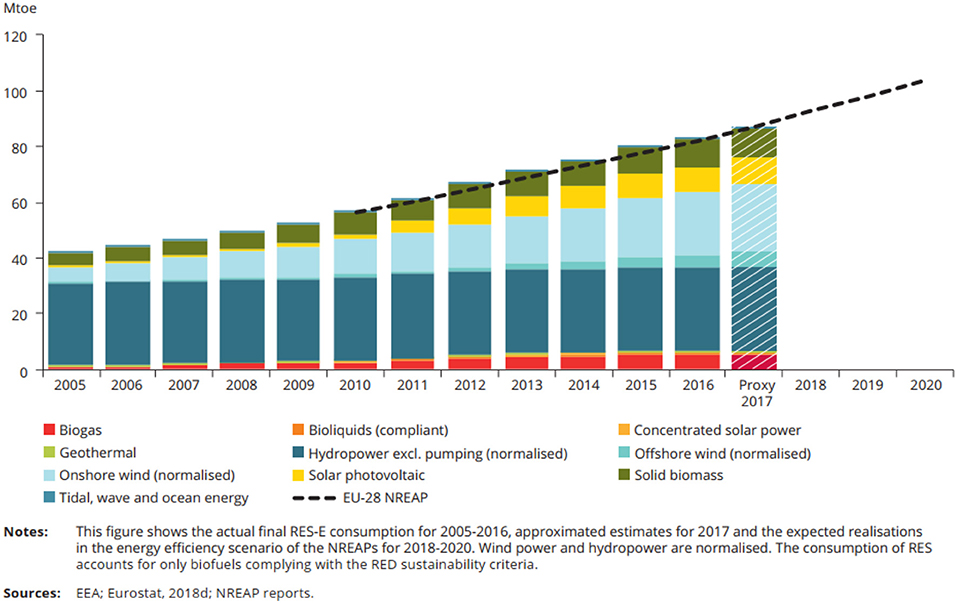
Figure 1. RES consumption per category (European Environment Agency, 2018).
Blue/marine renewable energy (BE) installations (tidal current energy, salinity gradient, ocean thermal energy, offshore wind energy, marine biofuels) offer a variety of new type of RES to be exploited.
Although just a few case studies regarding BE have been developed in the Mediterranean sea until now (Figure 2), the available data for its potential of wave energy, offshore wind, and marine currents prove to be exploitable. Toward this direction, the European Union has initiated the InnoBlueGrowth, a community of projects dealing with Blue Growth. More specifically it aims to establish growth initiatives and synergies in the sectors of aquaculture, coastal tourism, marine biotechnology, ocean energy, and seabed mining. Among them, MAESTRALE project that aim to set the foundations for a strategic deployment of BE in the Mediterranean area. Based on a survey of existing and innovative technologies worldwide, barriers and potentials in participating countries, MAESTRALE aims to broaden the sharing of knowledge among scientists, policy makers, entrepreneurs, and citizens (quadruple helix) and encourage effective measures and investments for the Blue Growth. Its consortium consists of 10 partners from 8 countries. Project partners are cooperating to detect maritime renewable energy potentials in participating countries as regards their physical, legal, technological, economic, and social contexts. Such initiatives, in our opinion, create a more safe environment for future investments.
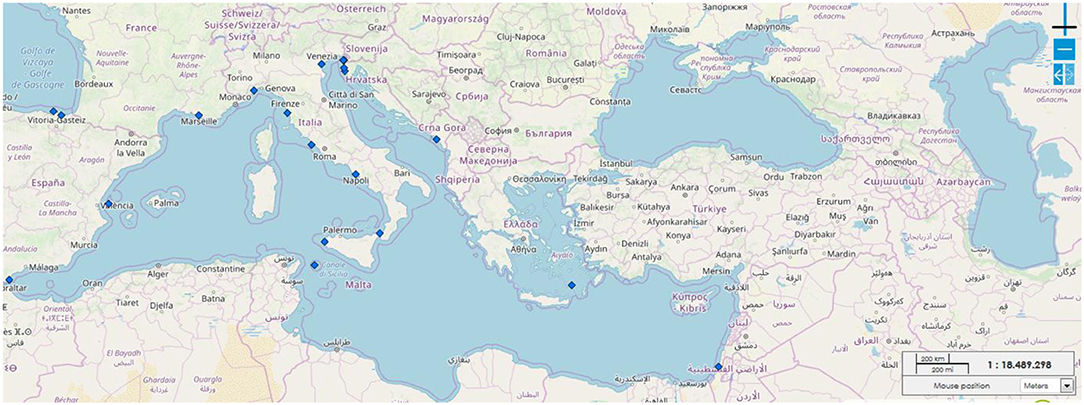
Figure 2. Pilot projects in the MED area, (Maestrale WEBGIS, 2018).
As Greek partners of MAESTRALE project, we would like to present our first results of our research on BE in Greek territory. Firstly, we will present the current context for implementing BE potential in Greece. Since we have not many BE installed capacity projects, we will then focus on research papers that investigate how to cope with externalities caused by specific BE technologies that are applicable also in the Greek territory. Lastly, we will try to propose how BE plants can be embedded successfully in Greek context.
Blue Energy in Greek Context (Energy Potential, Socioeconomic Factors)
Greece is regarded to have a very interesting RES potential due to its climate and overall geomorphology (Mattmann et al., 2016; Soukissian et al., 2017). More specifically, unlike the Baltic and of the North Sea, the specific features of MED area, such as geomorphology and the bathymetry, density and intensity of traditional uses, the fact that the majority of states have not yet established Exclusive Economic Zones, the absence appropriate regulatory framework as well as the non-implementation of the Maritime Spatial Planning do not facilitate the businesses concerned are some of ingredients of puzzling Greek context (Andreadou et al., 2018;Blue Energy Potential in the MED Area., 2018).
Both in the coastal areas as well as offshore, Greek seas contain a great variety of uses and activities in great density, interconnected and categorized as follows:
• Protected areas such as Posidonia fields, natura 2000 marine areas, national (marine) parks, river deltas etc.)
• Marine Traffic
• Ports
• Fisheries and Aquaculture. There are several kinds of fishery and fishing fields according to EU law. Moreover, there is an ongoing procedure for designating Areas for Aquaculture Development.
• Tourism (Resorts and hotel, beaches, Marinas, Cruising, Yachting, Water sports)
• Cultural sites: shipwrecks in the sea basin from ancient times are areas strictly protected. On some of them are under ongoing research. Moreover, many onshore archeological sites are located in coastal areas (Figure 3).
• Submarine cables and pipelines
• Military activities
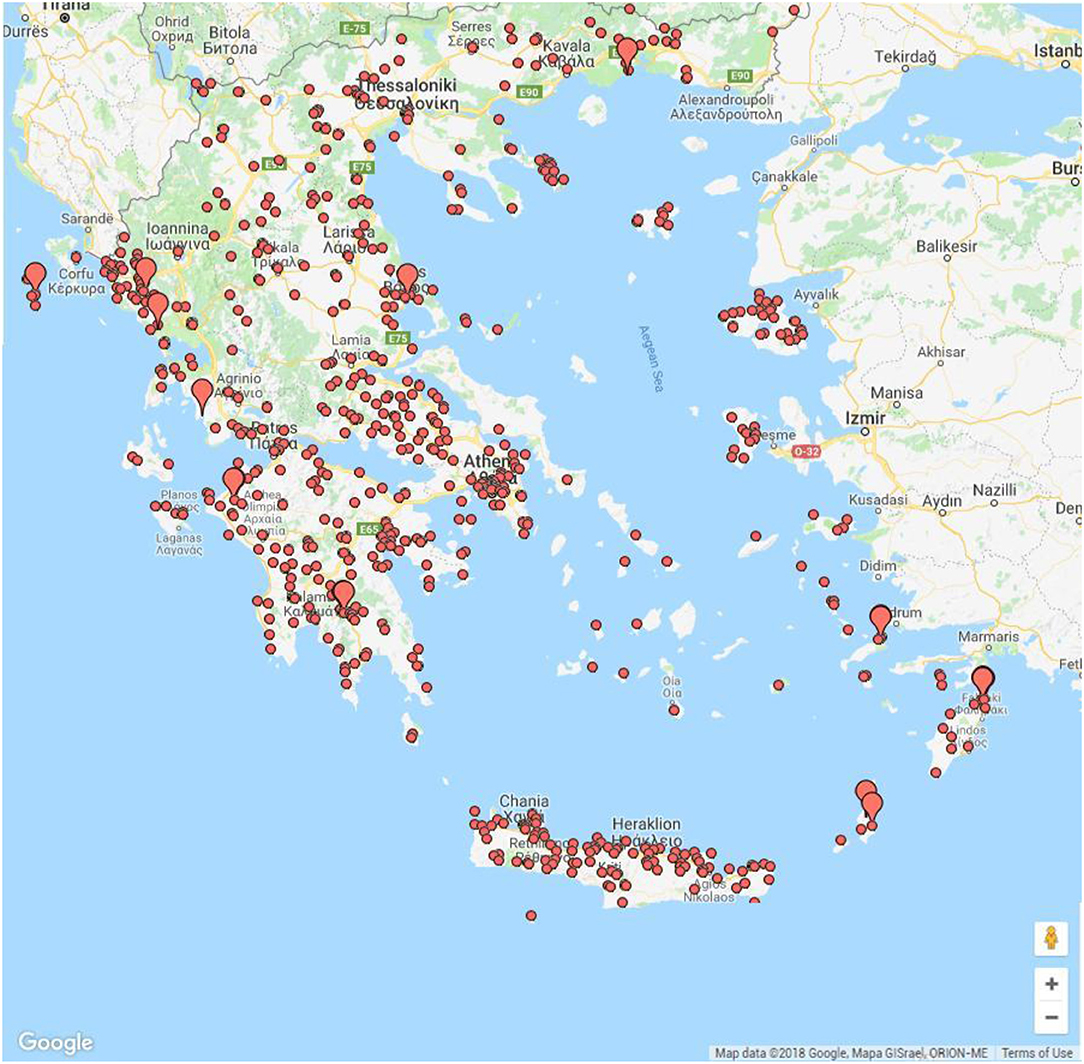
Figure 3. Map of archaeological sites in Greece “Monuments In Greece”. (Odysseus.Culture.Gr. http://odysseus.culture.gr/a/map/emap.jsp, 2012).
The integration of RES technologies is imperative in order to meet the country's 2020 goals. According to Law 3851/2010, Greece aims to increase the share of RES in gross total final consumption to 20% by 2020, which is 2% higher than that required by the EU Directive 2009/28/EC. Currently, the national plan for energy is currently under development and targets for 2030 and 2050 are not clearly defined (Greece State of the Environment Report/Summary, 2018). In the longer run, the Greek climate mitigation will depend upon appropriate investments for the grid transformation (Greece State of the Environment Report/Summary, 2018).
Regarding existing case studies in BE technologies in Greece, there are no BE plants fully implemented (Figure 4). In the past few years some offshore wind parks have been licensed to function but due to various factors they were not constructed (Coconet GIS, 2016). Eleven possible projects are located in Aegean area and two in Ionian area, with various capacities (EU 7th Framework Programme for Research and Technological Development), (CoCoNET).
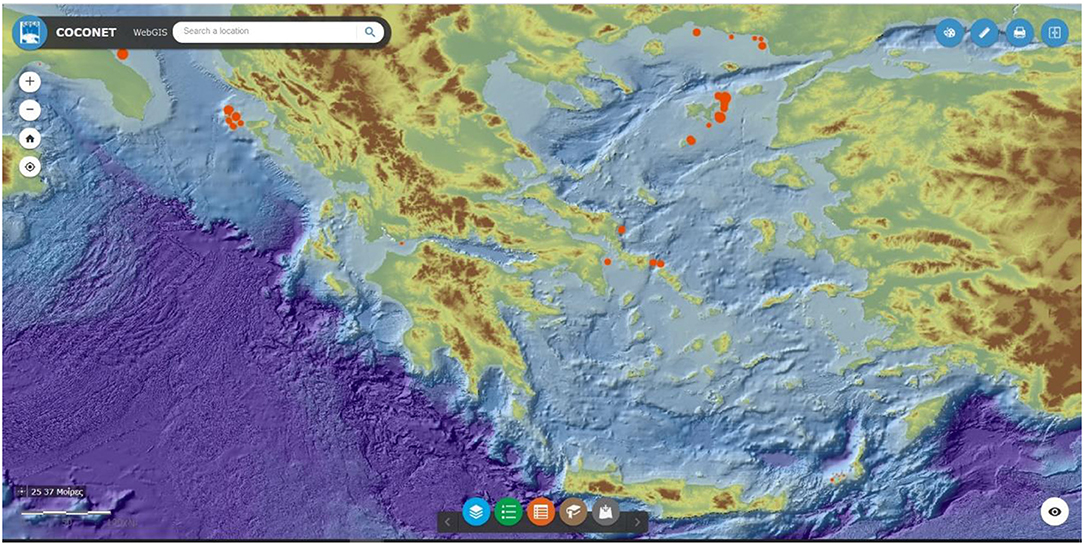
Figure 4. BE plants not implemented (Greece) (http://gismarblack.bo.ismar.cnr.it:8080/mokaApp/apps/COCOV3H5/index.html?null).
The delay in terms relevant legislations regarding licensing for BE plants (and in this case offshore wind farms), one needs to consider the complexity behind the policy making in Greece in the field of BE. Public bodies that have jurisdiction to activities in Greek seas (Et.gr, 2001) are the following:
• Ministry of Foreign Affairs, holding the jurisdiction for the maritime international affairs
• Ministry of National Defense, head of the Hellenic Navy Hydrographic Service (HNHS).
• Ministry of Maritime Affairs and Insular Policy responsible for marine transportation, protection of the marine environment, ports, and marine investment as well as head of the Greek coastguard
• Ministry of Rural Development and Food, with jurisdiction in both fisheries and aquaculture
• Ministry of Infrastructure, Transport, and Networks (www.yme.gr), responsible for the country's port related constructions
• Ministry of Economy, Development, and Tourism (www.mindev.gov.gr; www.mnec.gr) responsible for spatial planning of touristic projects, as well as for the approval of the siting of marinas; for the licensing process of public and private works related to the coastal and marine space.
In the current context, MAESTRALE BE potential report aims to highlight possible technologies to be implemented in each partnering country by examining current data on various BE types in parallel with a Strengths—Opportunities—Weaknesses—Threats (SWOT) analysis (see Annex). The results of this report regarding the Greek area will be discussed below (Blue Energy Potential in the MED Area., 2018).
Regarding wind power, it seems that the wind potential of the Aegean Sea and, secondarily, of the Ionian Sea, is adequately exploitable at offshore locations (Figure 5) (Soukissian et al., 2017). More specifically, central Aegean sea has the highest wind power density (mean annual wind power density ~885 W/m2). During summer the overall highest value is observed reaching peak values around 1,172 W/m2 over the south-eastern Aegean Sea, winter follows with highest value ~1,090 W/m2 over the N. Aegean Sea, then autumn with peak value ~806 W/m2 over the central part of the Aegean Sea, and finally, spring with peak value ~773 W/m2 over the E. Aegean Sea. However, due to sea bathymetry as well as the extent of territorial sea, the potential to be exploited is limited. It is a well-known practice in Greek power market, there is an interest from investors to enter in a new market (e.g., offshore wind farms), creating new employment opportunities during construction and maintenance. Wind turbines, though, have a great visual impact on the surrounding landscape. For these reasons they may be in conflict with certain economic interests (tourism, marine traffic, fishing etc.).
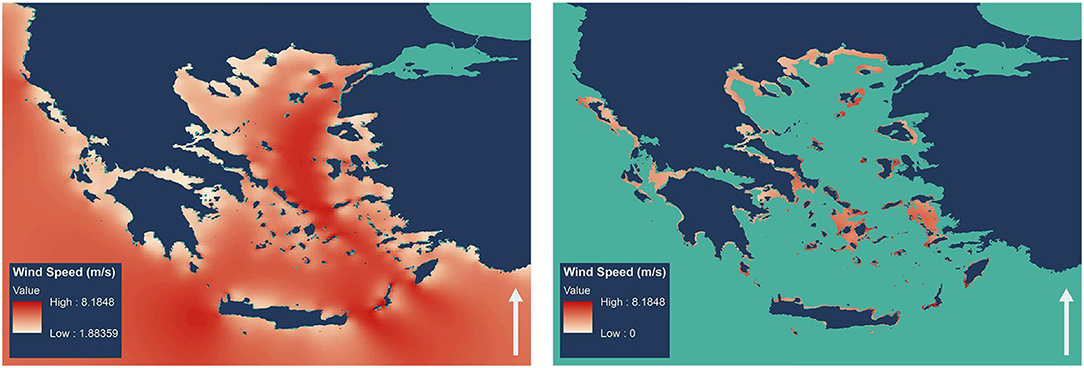
Figure 5. Wind Energy potential in Greece. (Left) Potential in the whole Greek territory. (Right) Areas of exploitable potential focused on sites with proper bathymetry, out of nature protected areas and within greek territory sea (Maestrale WEBGIS, 2018). Further editing by overlapping the layers referred in open source vector software.
Regarding wave energy (Stella, 2015) (Figure 6) Central Aegean Sea has the desirable range (5–10 kw/m) for power generation. More specifically, Ionian sea has the desirable range for the exploitation of this technology. Other possible areas of exploitation are around Skyros island, as well as around Andros and Tinos islands. Unfortunately, there are numerous protected areas in the aforementioned areas, while the existing bathymetry and limitations of territorial sea makes the available wave energy potential difficult to exploit. Regarding wave energy potential, there is a growing interest creating infrastructure for energy self-sufficiency in Greek not interconnected islands (NNI). Moreover, initiatives such as blue growth competitions etc. show an emerging interest on BE ventures, creating job opportunities as well as awareness about new types of RES. NIMBY attitude, though is common in Greek local societies concerning the adoption of new technologies. Time-consuming administrative procedures for licensing, construction and operation as well as the instability of tax system in Greece may hinder the implementation of BE plants. In addition, conflicting economic interests of existing power companies may threat the developments of such ventures. Also, due to the form of wave converters there might be a small visual impact of neighboring landscapes and this may affect negatively the local economies that are based on tourism.
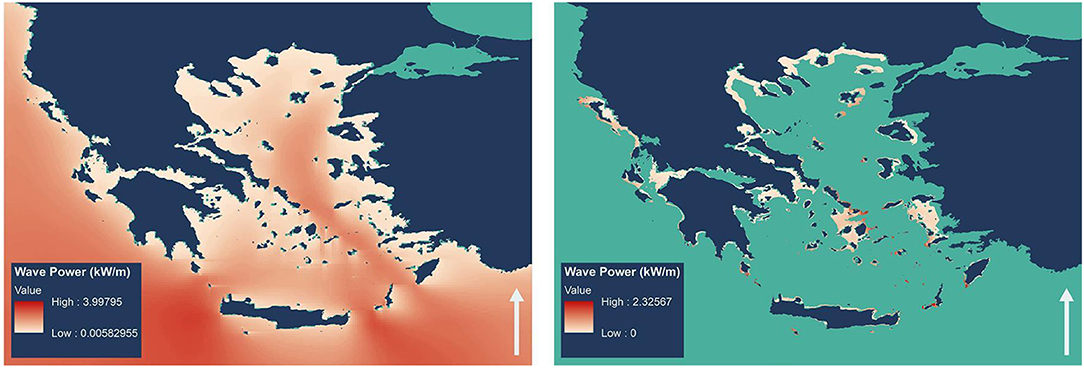
Figure 6. Wave Energy potential in Greece. (Left) Potential in the whole Greek territory. (Right) Areas of exploitable potential focused on sites with proper bathymetry, out of nature protected areas and within greek territory sea (Maestrale WEBGIS, 2018). Further editing by overlapping the layers referred in open source vector software.
Regarding marine current energy (Figure 7) the areas in Evia, in Kea, Kithnos, and Lesvos should be taken into consideration for exploitation (Stella, 2015; Maestrale Geo-Database, 2018). The velocity of currents is suitable for the exploitation of the energy produced using technologies similar to current energy, such as turbines or underwater kites. Tidal/marine current technologies can be implemented in certain regions in Greece as an alternative form of RES. It could be the most socially accepted type of technology since it is more likely to cause less conflicts due to the lack of visual impact. It may even make possible the establishment of synergies with already existing marine activities, due to the fact that the energy converters are submerged. Since, though, it is not a well-known type of BE technology, it may rise conflict among some social groups. Also, its lengthy construction period is a major investment disincentive.
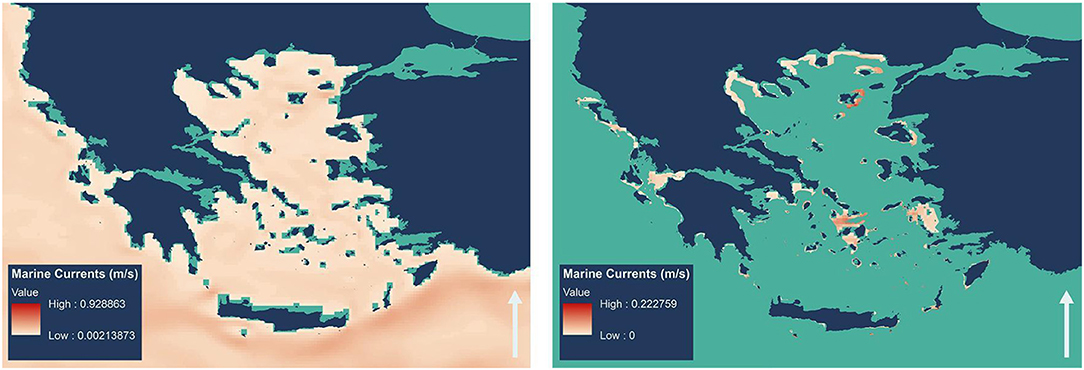
Figure 7. Marine current Energy potential in Greece. (Left) Potential in the whole Greek territory. (Right) Areas of exploitable potential focused on sites with proper bathymetry, out of nature protected areas and within greek territory sea (Maestrale WEBGIS, 2018).
Last but not least the possibility of sea algae cultivation needs to be taken into consideration. Though further research is needed, algae installations could serve as a supportive energy production system to other hybrid BE systems. Also, (micro)algae could be used as an alternative means of power generation in cities and rural areas. According to data retrieved from relevant databases, in Greece, sites with significant algae concentration are located in urban coastal areas (Figure 8) (Colella et al., 2016). The cultivation of algae could create job vacancies and protect marine areas form water pollution phenomena. It is, though, an unknown practice for Greek communities, which might lead to local resistance on its adoption. Its market acceptance as well, is not very well-known. For the time being though, alternative biofuel production technologies are more cost effective.
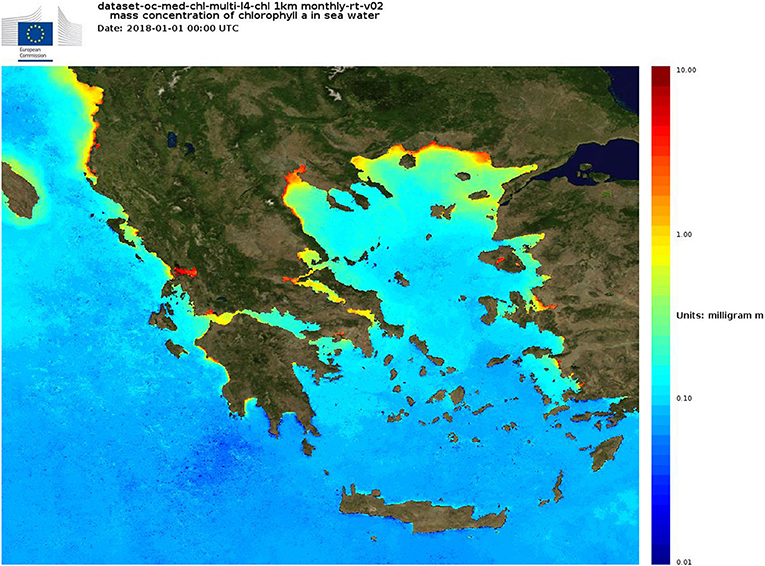
Figure 8. Mass concentration of chlorophyll in sea water (www.waters-creative.co.uk, 2015).
We could, in general divide the Greek territory in two parts regarding the blue energy potential exploitability:
• Islands for exploiting mainly wave and wind potential (and in some places also tidal energy potential)
• Urban coastal areas of the mainland, exploiting algae biomass
MAESTRALE project's main objective is to transfer available blue energy solutions in the Mediterranean basin by creating a quadruple helix model for their implementation, involving all the actors affected (citizens, scientists, policy makers, local authorities, entrepreneurs etc.). For our current research, we would like to focus on the social dimension of the helix, and more specifically the public acceptance of RES.
Literature on Public Acceptance of RES
From our point of view, social acceptance is one of the most crucial factors for the implementation of BE plants in the Mediterranean. Since wind power is one of the most promising in Greece, we focused our literature research mainly on wind energy plants (mainly onshore but also offshore).
According to Kaldelis et al., people tend to conceive the positive environmental externalities of RES in a global and/or national levels (Kaldellis et al., 2012). On the contrary, they realize their negative impact into their local environment and approximate surroundings. Contrary to the fact that BE technologies are far more costly to implement than traditional fossil fuel based ones, they are widely accepted also from people with low incomes (Welsch and Biermann, 2014).
Many researchers in the past few years tried to explain local citizen opposition on RES projects based on “Not In My Back Yard” (NIMBY) theoretical framework. In their paper though, Batel and Devine-Wright claim that there is a shift from NIMBY approach since many empirical studies failed to confirm its integrity (Batel and Devine-Wright, 2014). On the contrary, they propose to turn to approaches that “focus on everyday communication and thinking that hopes to link the human psychology and social and cultural trends” (Batel and Devine-Wright, 2014). VESPA framework serves as an alternative to NIMBY (Petrova, 2016), by organizing public concerns on RES into four major categories: Visual/landscape, Environmental, Socioeconomic, and Procedural Aspects.
Based on the literature review conducted so far, social wind energy externalities can be grouped to the following categories (Krekel and Zerrahn, 2017; Zerrahn, 2017):
• Visual/landscape aspect: It is mainly related to impacts on landscape aesthetics (visual disturbance). It is a main trigger of public opposition (Zerrahn, 2017). The conceived dimension of wind turbines, their visible height and the proximity to certain areas of interest (residences, touristic or not) are the most important aspects of this negative externality. It is closely related to the distance in which wind turbines are sited, and it influences a certain space stronger at considerable distances (Zerrahn, 2017). If it is beyond a predefined treatment radius, its visual impact diminishes (Krekel and Zerrahn, 2017). Also, the type of the landscape is important to public resistance and acceptance. If, for instance wind turbines are close to a scenic and/or culturally important landscape, it may raise more opposition. In industrial setting, the opposition is of lower intensity (Zerrahn, 2017). Finally it is highly dependent on the type of space wind farms are neighboring; in areas with low rise buildings, wind turbines are more visible.
• Environmental: This aspect discusses impacts on nature and biodiversity (Zerrahn, 2017). Although there are no researches proving long term impacts on species population, there are some showing both positive and negative impact on surrounding ecosystems. For example, collision of birds with wind turbines is recorded in the past (Marques et al., 2014) but redesigning wind turbines and wind power plants has decreased such incidents (May et al., 2015). Moreover, some studies proved that the foundations of wind turbines serve as artificial reefs (Langhamer et al., 2009; Wilson and Elliott, 2009). Moreover, noise pollution is recorded mainly on onshore wind farms
• Socioeconomic: It involves impacts on local economies. Regarding touristic economic activities, research has shown mixed evidence on how wind farms have affected local economies. They could harm marine activities associated with offshore or onshore spaces (maritime activities, shipping, tourism etc.). Moreover, RES installed technologies lead to decreased properties values (Friedl and Reichl, 2016). Oppositions to certain installed wind farms, may make potential buyers (potential residents—entrepreneurs) cautious about investing in certain spaces. This may affect property market, as well as investments on touristic stock.
• Procedural Aspects: Licensing a RES installation can be a lengthy procedure. This may affect investors' interest in certain regions.
Last but not least, we would like to point out another aspect that is safety concerns/reliability. Since wind energy is highly dependent on weather conditions (Zerrahn, 2017), grid systems based on availability of power may encounter problems in connectivity. On policy level, investments and technologies that promote energy storage should be promoted (Renewables 2017 Global Status Report, 2017), as well as improved grid connectivity (Eleftheriadis and Anagnostopoulou, 2015). In touristic locations, seasonal variations in energy demand must be also taken into account.
Results/Discussion on How BE Plants Could be Incorporated Successfully in the Local Territories
Mediterranean Area in general, has a complex identity. Since antiquity, it has been a very important cultural and economic hub. Nowadays, tourism is one of the main pillars of the MED economy and it has to be as less affected as possible in the creation and operation of blue energy plants.
Any new use/activity that has to be implemented should respect the coexistent uses to the possible extent, in order not to affect local economies. Especially when it has to be implemented in historical and cultural landscapes, spaces that are of great importance for local communities. Otherwise, strong public opposition might arise.
Public acceptance phenomenon, historically, has often been encountered with the adoption of new technologies but also with new architectural forms in public spaces (Petrova, 2016). Using RES and especially wind and hydropower, are well common practices for many centuries. Windmills and watermills were used for centuries and are part of many European Countries vernacular architecture (Figure 9). In most cases they are not only received positively, but they become tourist attractions themselves. It is the small scale, and the integration to the landscape and townscape that makes the difference.
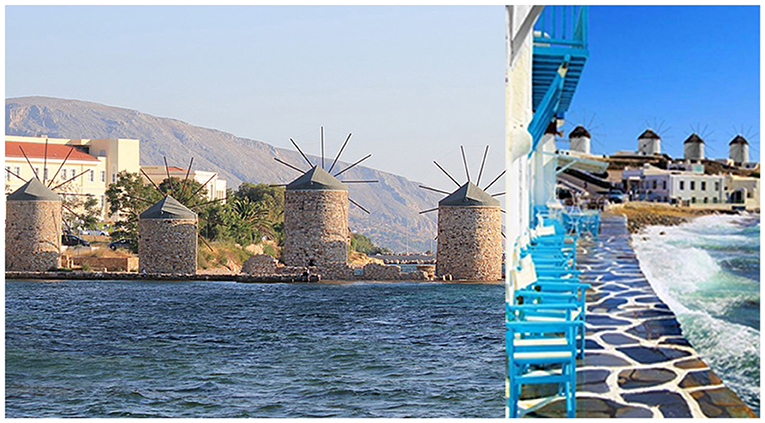
Figure 9. Traditional wind energy installations as an inspiration for scale, sizing, distances of offshore wind farms located in significant for Greek culture and tourism areas (Images accessed July 30 2018). (Right) Little Venice, Mykonos https://commons.wikimedia.org/wiki/File:Mykonos,_little_venice_02.JPG Attribution: I, Sailko Creative Commons Attribution 2.5 Generic license. (Left) Chiod islands retrieved from https://www.maxpixel.net/static/photo/1x/Sea-Marina-Chios-Greece-Windmill-Ruins-Holidays-1711777.jpg CC0. Public Domain.
Some guidelines retrieved from literature in order to reduce visual impacts on existing landscapes/cityscapes that could be also implemented in historical areas are the following
• According to literature, smaller wind turbine sizes are more preferable due to their lower impact on the landscape (van Rijnsoever et al., 2015). New BE installations should be downsized, by breaking the scale into more, small scale farms. Hybrid BE systems are preferred to farms installing only one type of BE technology and such types could also lead to downsizing of energy generators size (Castro-Santos et al., 2016).
• New BE installations, should be integrated to the local landscapes and townscapes, with the help of design professionals, that in cooperation with engineers dealing with matters like power production, noise, and various estimations, will deal with the aesthetic part of the plants, and their integration to the local natural and cultural environment.
• In urban areas there could be a potential for algae biomass exploitation. This is a type of BE that does not have visual impact, so wherever applicable, it could be used as a complimentary type of BE.
• Small pilot plants could test the viability of such projects as well as raise social awareness about these types of RES. Apart from wind and wave energy, other forms of BE technologies have not been fully tested in the MED area.
Conclusions
The integration of BE plants in a certain space is connected to its context, that is different in every case. Multidisciplinary approaches for their implementation are needed. Another matter to be taken into account the matter of scale as well as the specific context. Our conclusion is that in order for a new BE plant to be properly implemented in a local community there should be:
• A further linkage of legislation with up-to-date databases of protected areas, sea traffic, fisheries, and other maritime activities, underwater archeological sites, submarine cables and pipelines, military protected areas, could clearly define the areas where BE plants can be implemented. In other words, a detailed marine spatial planning similar to inland spatial planning. Particularly for the case of Greece, for the time being there is MSP regulatory framework is in its infancy.
• Involvement of local communities in the creation of the BE plant, in a participatory design manner
• Architects and design professionals should be included in the teams responsible to design BE plants especially on how they will be integrated to landscapes and townscapes. In BE facilities neighboring with culturally significance, the principles of vernacular RES technologies (e.g., windmills) that have to be considered is their smaller scale ad integration with the existing landscape. For example, complementing a promontory and/or surrounding a gulf in a linear way, might be some design solutions to consider. In other words, BE plants should not be scattered in any place, ignoring the surrounding environment. If the design of wind farms does not respect the surrounding historical landscape/cityscape local opposition to BE plants will surely arise. Unfortunately, full scale best practices of BE plants have not been found.
• Design professionals should also be involved in wind turbine design, so as to find ways to decrease its scale while retaining the capacity favored (e.g., creating hybrid systems in order to reduce visual impact, find alternative ways to design wind turbines in order to decrease their visual impact etc.).
Mediterranean is a new market for installing BE plants. Their form, size, scale, and arrangement are of critical importance for their social acceptance. A multidisciplinary team is needed to address such issues. In other words, Mediterranean is too beautiful to confront it or neglect it. We should rather follow the context of its unique character and let it drive us to widely accepted and desired results.
Author Contributions
All authors listed have made a substantial, direct and intellectual contribution to the work, and approved it for publication.
Funding
This work was carried out in the framework of the Maestrale project, funded by the Interreg MED 2014-2020 Programme and co-financed by the European Regional Development Fund. Data for BE potential in Greece as well as for the SWOT analysis were retrieved from BE potential report deliverable of MAESTRALE project. We would like also to thank Mr. Ilias Papagianopoulos-Miaoulis (Research Assistant, Aristotle University of Thessaloniki) for editing GIS date to create the BE potential maps presented in this paper.
Conflict of Interest Statement
The authors declare that the research was conducted in the absence of any commercial or financial relationships that could be construed as a potential conflict of interest.
Supplementary Material
The Supplementary Material for this article can be found online at: https://www.frontiersin.org/articles/10.3389/fenrg.2019.00040/full#supplementary-material
References
Andreadou, T., Kontaxakis, D., Fotiadou, A., Iakovou, K., and Papagiannopoulos-Miaoulis, I. (2018). “Maestrale: a program for blue energy development in mediteranean sea,” in 11th National Conference On Renewable Energy Sources (Thessaloniki: Eκδóσεισ Γιαχoνδη, Institute of Solar Technology), 521–532.
Batel, S., and Devine-Wright, P. (2014). Towards a better understanding of people's responses to renewable energy technologies: insights from social representations theory. Public Underst. Sci. 24, 311–325. doi: 10.1177/0963662513514165
Castro-Santos, L., Martins, E., and Soares, C. G. (2016). Cost assessment methodology for combined wind and wave floating offshore renewable energy systems. Renew. Energy 97, 866–880. doi: 10.1016/j.renene.2016.06.016
Coconet GIS, (2016). Coconet GIS [Online]. Available online at: http://coconetgis.ismar.cnr.it/ (accessed January 29, 2018).
Colella, S., Falcini, F., Rinaldi, E., Sammartino, M., and Santoleri. (2016). Mediterranean ocean colour chlorophyll trends. PLoS ONE 11:e0155756. doi: 10.1371/journal.pone.0155756
Eleftheriadis, I., and Anagnostopoulou, E. (2015). Identifying barriers in the diffusion of renewable energy sources. Energy Policy 80, 153–164.
Et.gr, (2001). Law 2971/2001 Foreshore and Shore Zone Regulations. Available online at: http://www.et.gr/idocs-nph/search/pdfViewerForm.html?args=5C7QrtC22wHgzIpqlooT4HdtvSoClrL8IhofRqrFbnV5MXD0LzQTLWPU9yLzB8V68knBzLCmTXKaO6fpVZ6Lx3UnKl3nP8NxdnJ5r9cmWyJWelDvWS_kAEhATUkJb0x1LIdQ163nV9K–td6SIucyPpaJiv5us0QV7CtNNDTUEe5zInZM5ZJ9TmYTvYFbI (accessed April 12, 2017).
EU Energy and Climate Policy - Ocean Energy Europe. (2018). Ocean Energy Europe. Available online at: https://www.oceanenergy-europe.eu/policy-topics/climate-energy/ (accessed July 1, 2018).
European Environment Agency (2018). Renewable Energy in Europe 2018 - Recent Growth and Knock-on Effects. Available online at: https://www.eea.europa.eu/publications/renewable-energy-in-europe-2018 (accessed February 28, 2019).
Friedl, C., and Reichl, J. (2016). Realizing energy infrastructure projects – a qualitative empirical analysis of local practices to address social acceptance. Energy Policy 89, 184–193. doi: 10.1016/j.enpol.2015.11.027
Greece State of the Environment Report/Summary (2018). [ebook] Athens: National Center of Environment and Sustainable Development (NCESD), 123–125. Available online at: http://ekpaa.ypeka.gr/images/Greece%20State%20of%20the%20Environment%20Report%20Summary%202018%20English%20Version_WEB.pdf (accessed March 4, 2019).
Kaldellis, J. K., Kapsali, M., and Katsanou, E. V. (2012). Renewable energy applications in Greece—what is the public attitude? Energy Policy 42, 37–48. doi: 10.1016/j.enpol.2011.11.017
Krekel, C., and Zerrahn, A. (2017). Does the presence of wind turbines have negative externalities for people in their surroundings? Evidence from well-being data. J. Environ. Econ. Manage. 82, 221–238. doi: 10.1016/j.jeem.2016.11.009
Langhamer, O., Wilhelmsson, D., and Engström, J. (2009). Artificial reef effect and fouling impacts on offshore wave power foundations and buoys – a pilot study. Estuar. Coast. Shelf Sci. 82, 426–432. doi: 10.1016/j.ecss.2009.02.009
Maestrale Geo-Database (2018). Available online at: http://192.167.120.31/lizmap-web-client-3.1.4/lizmap/www/index.php/view/map/?repository=maestrale~HYPERLINK (accessed July 1, 2018).
Maestrale WEBGIS, (2018). Maestrale WEBGIS [online]. Available online at: http://192.167.120.31/lizmap-web-client-3.1.4/lizmap/www/index.php/view/map/?repository=maestrale&project=maestrale (accessed February 10, 2018).
Marques, A. T., Batalha, H., Rodrigues, S., Costa, H., Pereira, M. J. R., Fonseca, C., et al. (2014). Understanding bird collisions at wind farms: an updated review on the causes and possible mitigation strategies. Biol. Conserv. 179, 40–52. doi: 10.1016/j.biocon.2014.08.017
Mattmann, M., Logar, I., and Brouwer, R. (2016). Wind power externalities: a meta-analysis. Ecol. Econ. 127, 23–36. doi: 10.1016/j.ecolecon.2016.04.005
May, R., Bevanger, R. K., Lorentsen, S.-H., and Nygård, T. (2015). Mitigating wind-turbine induced avian mortality: sensory, aerodynamic and cognitive constraints and options. Renew. Sustain. Energy Rev. 42, 170–181. doi: 10.1016/j.rser.2014.10.002
Petrova, M. A. (2016). From NIMBY to acceptance: toward a novel framework — vespa — for organizing and interpreting community concerns. Renew. Energy 86, 1280–1294. doi: 10.1016/j.renene.2015.09.047
Renewables 2017 Global Status Report (2017). Paris: REN21 Secretariat. Available online at: http://www.ren21.net/wp-content/uploads/2017/06/17-8399_GSR_2017_Full_Report_0621_Opt.pdf (accessed July 1, 2018).
Soukissian, T., Papadopoulos, A., Skrimizeas, P., Karathanasi, F., Axaopoulos, P., Avgoustoglou, E., et al. (2017). Assessment of offshore wind power potential in the Aegean and Ionian Seas based on high-resolution hindcast model results. AIMS Energy 5, 268–289. doi: 10.3934/energy.2017.2.268
Stella, G. (2015). ORECCA. Available online at: http://orecca.rse-web.it/map.phtml (accessed July 1, 2018).
van Rijnsoever, F. J., van Mossel, A., and Broecks, K. P. F. (2015). Public acceptance of energy technologies: the effects of labeling, time, and heterogeneity in a discrete choice experiment. Renew. Sustain. Energy Rev. 45, 817–829. doi: 10.1016/j.rser.2015.02.040
Welsch, H., and Biermann, P. (2014). Electricity supply preferences in europe: evidence from subjective well-being data. Resour. Energy Econ. 38, 38–60. doi: 10.1016/j.reseneeco.2014.05.003
Wilson, J. C., and Elliott, M. (2009). The habitat-creation potential of offshore wind farms. Wind Energy 12, 203–212. Available online at: https://onlinelibrary.wiley.com/doi/abs/10.1002/we.324
Keywords: blue energy, blue economy, landscape, RES public acceptance, history, community
Citation: Andreadou T, Kontaxakis D and Iakovou KV (2019) Blue Energy Plants and Preservation of Local Natural and Cultural Resources. Front. Energy Res. 7:40. doi: 10.3389/fenrg.2019.00040
Received: 31 August 2018; Accepted: 27 March 2019;
Published: 14 May 2019.
Edited by:
Simone Bastianoni, University of Siena, ItalyReviewed by:
Peter Burgherr, Paul Scherrer Institut (PSI), SwitzerlandMaria Vittoria Struglia, Italian National Agency for New Technologies, Energy and Sustainable Economic Development (ENEA), Italy
Copyright © 2019 Andreadou, Kontaxakis and Iakovou. This is an open-access article distributed under the terms of the Creative Commons Attribution License (CC BY). The use, distribution or reproduction in other forums is permitted, provided the original author(s) and the copyright owner(s) are credited and that the original publication in this journal is cited, in accordance with accepted academic practice. No use, distribution or reproduction is permitted which does not comply with these terms.
*Correspondence: Konstantina Vasiliki Iakovou, a2lha292dUBhcmNoLmF1dGguZ3I=
 Tatiana Andreadou
Tatiana Andreadou Konstantina Vasiliki Iakovou
Konstantina Vasiliki Iakovou